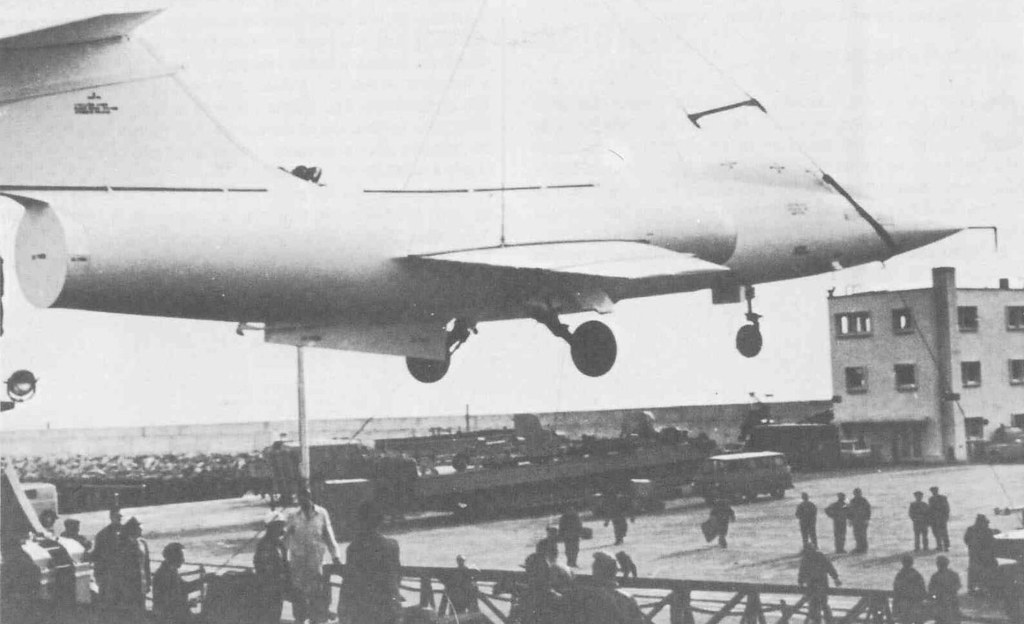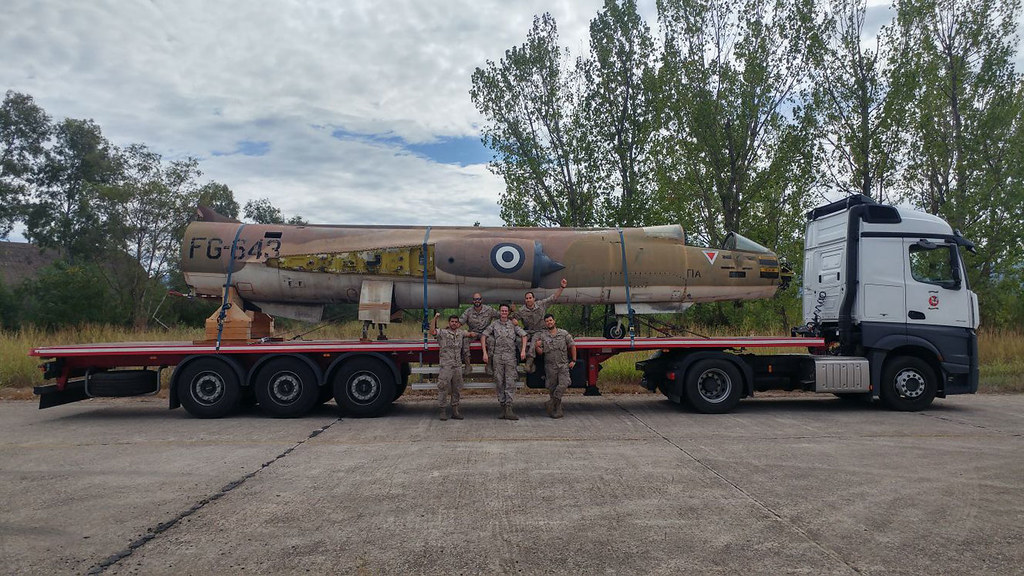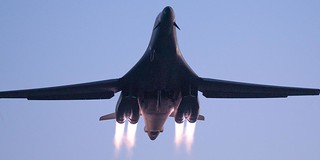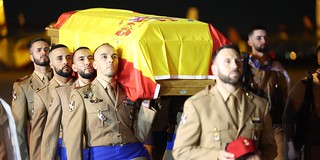The history of the F-104 Starfighter that the Spanish Air Force keeps at Torrejón Air Base
The Torrejón Air Base, in Madrid, is one of the main installations of the Spanish Air Force, and headquarters of its 12th Wing.
The 12th Wing is one of the units that are part of the Air Alarm Service of the Air Force, whose mission is to defend Spanish airspace constantly, which implies having two fighters ready to take off 24 hours a day and 365 days a year. The 12th Wing is equipped with EF-18M Hornet fighters, but on its platform there are also some old aircraft: an F-4C Phantom II fighter, an RF-4C reconnaissance aircraft and an F-104G fighter Starfighter. These are models already out of service. This Friday, Fly By Wire Aviation has published an interesting video showing that F-104G in detail:
The Air Force operated 18 single-seat F-104G and 3 two-seat TF-104G between 1965 and 1972, achieving the feat of not losing any of these aircraft (remember that the German Luftwaffe lost 292 of its 916 Starfighters, 116 pilots dying, thus receiving the nickname "Witwenmacher", widow maker). After their return to the US, those old Spanish fighters were delivered to Greece (10 aircraft) and Turkey (11).

The F-104G parked on the Torrejón platform has construction number 683D-6092 and serial number 63-13643. The plane was built in Montreal, Canada, by the company Canadair, making its first flight on November 30, 1964, according to the International F-104 Society. It was delivered to the US Air Force on January 27, 1965, but without serving in it, since the plane was intended to be sent to Spain. The plane arrived at the Rota Naval Base on June 6, 1965, surely wrapped in white rubber like the first planes delivered in January of that year (as we see in this photo published by Aeroplano Magazine of the Spanish Air Force).
Once delivered to the Spanish Air Force, this aircraft received the military registration C.8-12, which indicates that it was the 12th F-104 delivered to Spain. The serial number FG-643 on its fuselage and the number 33643 on its tail were originally painted, later receiving the numeral 161-22, painted in front of its air intakes, corresponding to the 161 Squadron, until then equipped with the F-86 Sabre. In November 1967, the 161 Squadron was renamed 104 Squadron, due to the reorganization of the fighter squadrons of the Air Force, so the protagonist of this story began to wear a new numeral on its fuselage: 104-22, which would change to 104-12 a year later. This last numeral is the one that currently shows this plane in Torrejón.
The C.8-12 came to know the current 12th Wing, created on March 25, 1971, since this aircraft was officially transferred to that unit on May 31, 1971. Just one year later , on May 31, 1972, he was retired from service, having completed 676 flight hours.

Once returned to the USAF, the aircraft was delivered to the Greek Air Force on June 14, 1972, recovering its number FG-643 and being assigned to 335 Squadron, based in Araxos, in the Peloponnese peninsula. In 1974 Alex Staruszkiewicz took this photo during a Tiger Meet at Bitburg AFB, Germany.
It was in service for 20 years. On May 20, 1992, at 11:42 local time, the plane landed at Agrinion Air Base, in what was its last flight, being stored at said base.

In Agrinion, FG-643 was exposed to the elements for 15 years, until it was selected by personnel of the Spanish Air Force to be returned to Torrejón, in order to form part of the collection of historic aircraft from the 12th Wing.

The plane had to be dismantled, a process that we see in these photos published by International F-104 Society.

The operation required separating the wings, tail and nose, otherwise the plane would not have entered the trailer.

Once aboard the Spanish truck, the FG-643 left Agrinio behind, where other old F-104s that served alongside it continue. Others have had better luck and are displayed in different places of Greece.

In October 2017, it left Greece, disassembled, aboard an Spanish Air Force truck: 45 years later, the FG-643 returned to Spain, being taken to the Torrejón Air Base.

The FG-643 arrived in Torrejón in a deplorable state, with its paint faded and damaged after so many years outdoors.

Here we can see the FG-643 upon its arrival in Torrejón, in one of the hangars of that base.

On October 10, 2017, the Spanish Air Force published the photos that you can see here, showing the arrival of this plane in Torrejón.

The FG-643 was reassembled in Torrejón, including the fuel tanks at the ends of its wings.

A restoration process then began to restore it to its splendor.

The process included the removal of his Greek paint, to restore him to the appearance he had when he served with 104 Squadron.

PFinally, on April 20, 2018, the Spanish Air Force announced the return of this F -104G with its Spanish paint.

The plane has recovered the Spanish military registration C.8-12 and once again wears the numeral 104-12, which it carried from 1968 to 1972. Today, it is the only F- 104G Spanish who has returned to Spain, because the F-104G preserved in the Cuatro Vientos Air Museum is an aircraft that belonged to the German Luftwaffe.
---
Photos: Ejército del Aire / Sección de Audiovisuales del Ala 12 / Roberto Yañez / Benjamín García Escacena / Juan Manuel Gracia / International F-104 Society.
|
Don't miss the news and content that interest you. Receive the free daily newsletter in your email: |
- Most read
- US F-35A fighters flying with Polish F-16s over Poland at a time of great tension
- The brutal 'touch and go' of a Lufthansa Boeing 747 at Los Angeles Airport
- The deployment of Spanish soldiers of the Regulars and BRILAT near Russian territory
- Eurofighter vs F-35: the opinions of professional pilots on these advanced fighters
- The firearms used by the Pontifical Swiss Guard, the smallest army in the world
- Sierra Army Depot, a huge United States base with hundreds of Abrams tanks stored
- Portugal confirms that it has begun its transition to the F-35 and indicates bad news for Spain

 ES
ES







Opina sobre esta entrada: